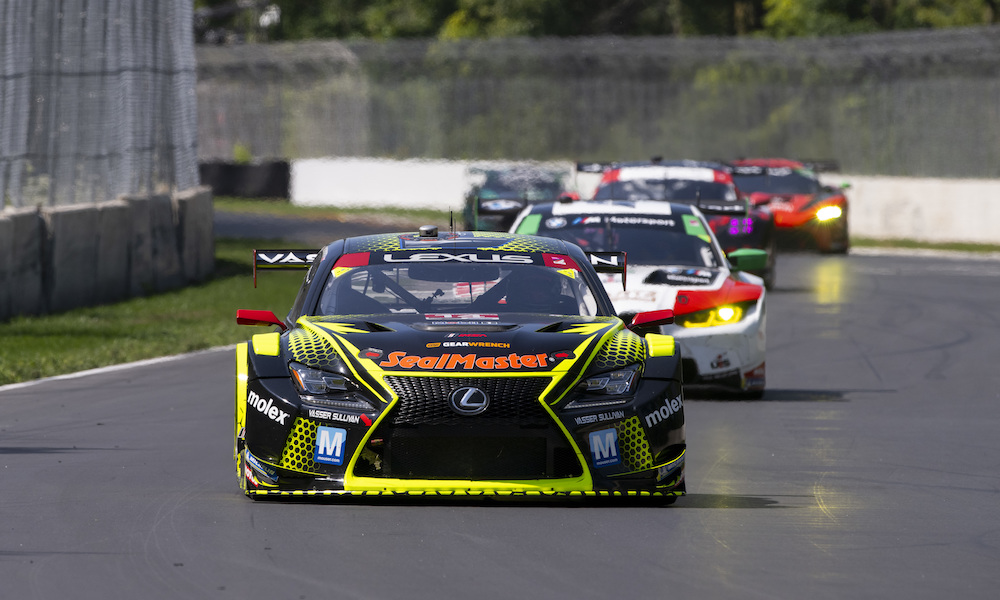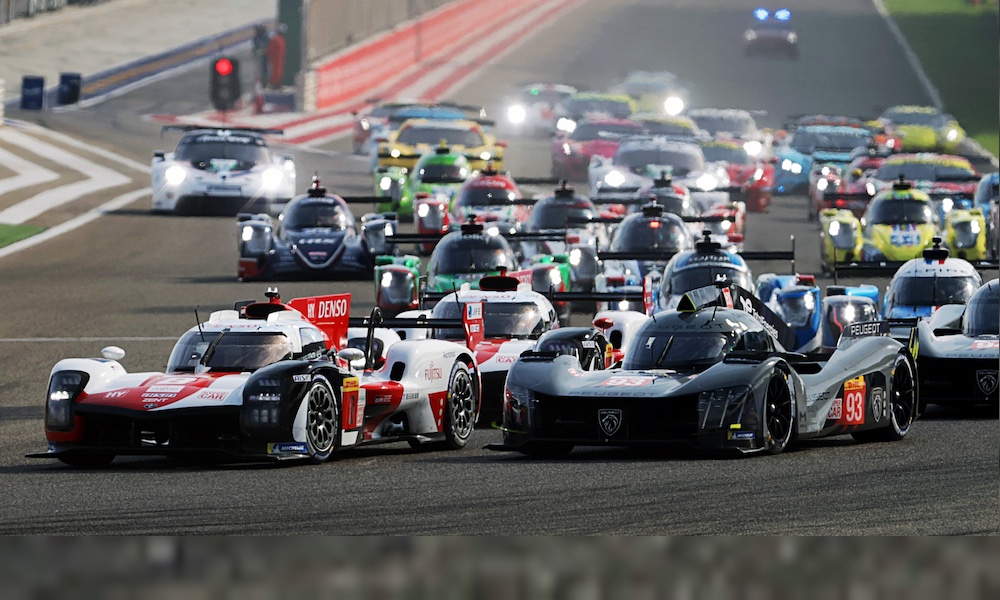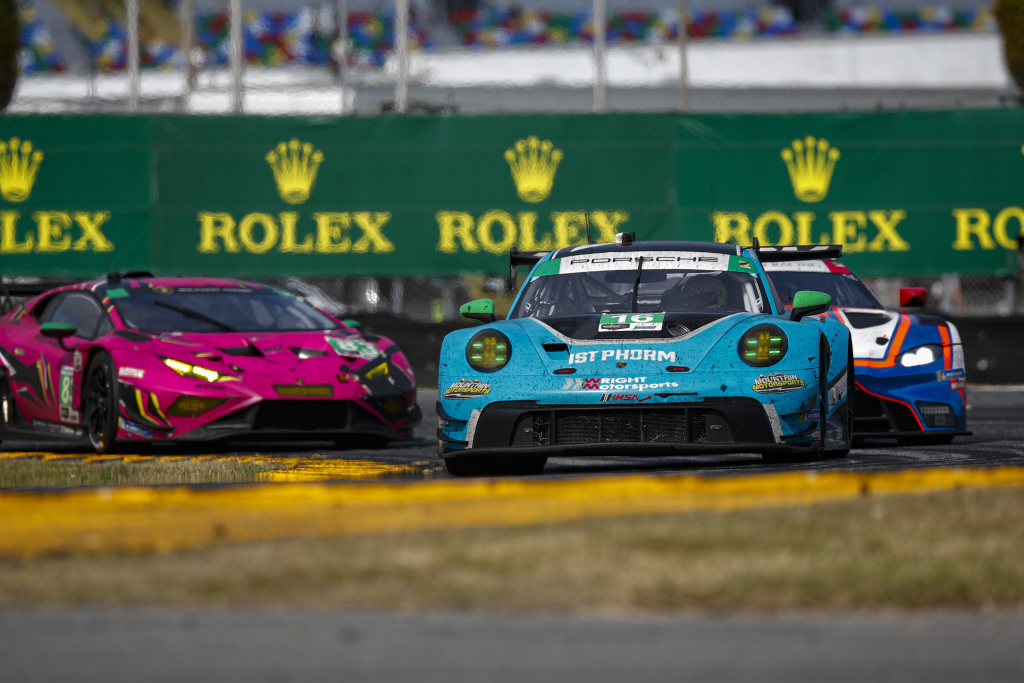IMSA is introducing a new approach to gathering Balance of Performance (BoP) data for its large field of cars in its GTD and GTD Pro classes.
Having assembled a full assortment of GT models for this week’s pre-season test at Daytona International Speedway, the WeatherTech SportsCar Championship is engaging with each manufacturer and a chosen team along with a professional driver attached to the brand to work through an in-depth run plan that’s designed to generate accurate data for the series to build its BoP tables.
The change in BoP information gathering is significant as it brings every manufacturer involved in GTD and GTD Pro into the BoP process with the series’ technical team as a partner, rather than an opponent.
“Without going completely back to the drawing board on BoP, I think all of us are trying to achieve the same thing, and that is to provide a platform for the most equal competition among the most different vehicle platforms in motorsport with front-engine, rear-engine, turbo, and non- turbo cars, with aerodynamic capabilities that are all entirely different,” IMSA president John Doonan told RACER.
“Based on the overall design of the cars, there’s a huge variety. And while that is one of the biggest blessings of what we do in endurance sports car racing, with so many manufacturers competing, it also presents one of the biggest challenges.
“What IMSA has tried to do is take a very pragmatic, technical approach to it all. And what [senior technical director] Matt Kurdock and his team have done in working with the manufacturers, since we started these GT technical working groups in August, is taking the BoP formulation process to the next level of collaboration.”
Three new cars came to GTD in 2023. IMSA’s extended attempts to successfully integrate Porsche’s new 2023 911 GT3 R model among its rivals presented a number of lessons that inspired the series to revisit its pre-season BoP information gathering policies.
Based on its peerless reputation, and the GTD championship it earned with the previous 911 GT3 R model in 2022, Porsche’s newest derivation of the car was expected to perform at the same levels as its predecessor.
But those targets, namely in the top speed category, were significantly down during last December’s BoP tests at Daytona. The gap at the test between the car’s expected performance and its actual performance led to questions as to whether all of its speed was being shown. In most BoP tests, manufacturers go to great lengths to hide their car’s true capabilities with the hope of using those hidden doses of extra performance to their benefit in the races.
It’s an age-old routine where series that use BoP and its manufacturers are often pitted against each other during the BoP creation process like detectives and suspects, and that’s why IMSA decided it was time to change the way that it captures performance data and avoid new-car balancing issues as it encountered with Porsche.
Looking to next season, among the 11 unique models found in GTD, four are either brand-new, led by Corvette’s Z06 GT3.R and Ford’s Mustang GT3, or heavily revised in the cases of Aston Martin and McLaren after receiving evolution kits from their manufacturers. Creating equal footing for those four brands among the other seven to allow all 11 to vie for wins in January at the Rolex 24 At Daytona and the rest of the events on the calendar drove the BoP process tweaks in action this week at DIS.

“We wanted to make this process something that was different, that was built on trust and integrity,” Doonan said. “When you’re launching a new vehicle or a new platform or a new powertrain and expectations are high, collaboration with the manufacturers on BoP is the best way to do it, and IMSA wants to make sure that happens from the outset.”
Led by Kurdock, IMSA’s technical staff has spent recent months in dialogue with each GT manufacturer and designed individualized test plans for Acura, Aston Martin, BMW, Corvette, Ford, Lamborghini, Lexus, McLaren, Mercedes-AMG, Ferrari and Porsche to ensure the Daytona test generates all of the information the series needs to set the opening BoP specifications for 2024.
“After the cars have gone through a complete technical inspection, we’re going to have our technical officials embedded with the teams as they’re running the test programs,” Kurdock said. “We’re going to control various aspects of what tires can be on the vehicle, the fuel loads that are prescribed, and aspects like that. In my tenure here and having been involved in some of the previous testing efforts, I don’t think it’s been done to this scale before.”
Greater transparency is another key aspect of IMSA’s BoP process where the data will be shared across all 11 GTD manufacturers. Any aspects of the information that looks odd or stands as an outlier to the rest of the data will be placed under the group’s unified microscope. By asking all of the manufacturers to give 100 percent in testing, and to keep each other honest by scrutinizing everyone’s BoP data, IMSA is confident it will meet its performance-balancing goals.
“After we proceed with the testing this week, we’re taking the data and running a thorough review to then determine if that data should be used to determine if it all makes sense,” Kurdock said. “The group is only as good as the sum of its components here. IMSA is trying to cover off all aspects of potential performance that could be held back, and we’re not naïve.
“We understand that if it’s someone’s prerogative to do that, that that may still occur, but what we’ve put forth is that we’re going to be doing this as a group; everyone’s going to be running the same program, under similar testing conditions. And that data is going to be made available, not just internally, and to each manufacturer, but to the entire manufacturer group. We not doing all of this with blind faith.”
IMSA and the 11 GT manufacturers are also using the BoP test to learn about Michelin’s new tire for the class and how each model reacts to the different rubber.
“We’re very anxious to get those four new platforms benchmarked, and I think what’s really important here is that all platforms are on a new tire,” Kurdock said. “And historically, even just changing the compound of a tire and not changing its construction has challenged balance of performance. So we don’t quite know at this point in time whether the new tire affects everyone equally, or whether it’s going to benefit some platforms more than others.
“So, that is a major aspect of what we’re trying to learn this week and why we’re trying to run the testing under such controlled conditions on all on all 11 platforms.”
If, by chance, one or more manufacturers do try to game the system and hide some performance capabilities from the series, IMSA has its rulebook to regulate and resolve the matter by parking any models that exceed what was shown during the test. The image of having every car from a brand’s camp ordered to pit lane during the Rolex 24 — or any other event — with the NBC cameras rolling is a powerful deterrent and inspiration to comply with the spirit of the BoP tests
“For this to work, it needs everybody’s contribution, from the race teams preparing the cars to the drivers giving it their all to the manufacturers, to everybody involved, and everybody at IMSA,” Doonan said. “That’s what I’ve witnessed in the technical working groups leading up to this. It’s a true collaboration among everybody to try to get to the most level playing field that we can achieve so we can all put on the best show for our audience.”


